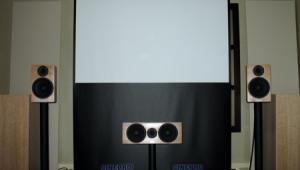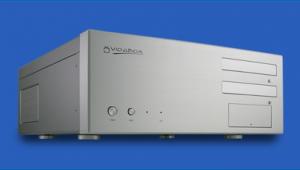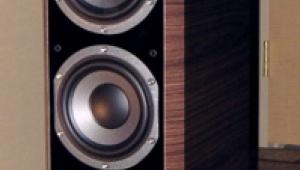Pioneer Goes Kuro

Pioneer's main goal with this project, as should be obvious from the name, was to dramatically improve the black levels on its plasma sets. Not so much because they needed a major revision, but because black levels are so important and the competition in the race for deeper blacks is becoming more intense.
The new models, which will start rolling out to dealers next month (June), are radically redesigned from the current Pioneer line. The panel is new, the color filters are new, and there's a new ASIC to improve the video processing not only for high definition but for standard definition programming as well.
Plasmas are self-emitting designs. The pixel phosphors themselves light up when energized rather than the light source coming from a backlight (as in LCD flat panel designs) or a projection lamp or LEDs (as in rear projection sets). But while this would appear to give plasmas an advantage in the ability to produce a deep black, the fact is that plasmas must maintain a constant charge on each pixel, even when reproducing black, so that it is ready to fire rapidly when triggered. According to Pioneer's presentation, these new models reduce this residual illuminance by 80% compared to last year's designs. This should result not only in a substantial drop in the level of the deepest black, but also, they claimed, increase by 3x the gradations in the darkest grays leading down to black.
We saw a prototype of this new Pioneer technology at this past January's CES, and it was impressive, if not more so. It was equally, if not more, impressive in the near-production samples that were liberally distributed around the New York exhibit space. It's impossible to make definitive judgments on products at a line show like this, but these new Pioneer plasmas look like winners.
Pioneer is moving further up-market, but the announced prices, while higher than much of the competition, were still lower than some of Pioneer's current models. Here's the breakdown for the new sets. Pioneer refers to its non-1080p, HD models as XGA, for come computer-centric reason. The 1080p designs are, of course, full 1920x1080p. All the screen dimensions shown are diagonal.
Pioneer PDP-4080HD XGA 42" $2700 June PDP-5080HD XGA 50" $3500 June PDP-5010FD 1080p 50" $5000 Sept PDP-6010FD 1080p 60" $6500 Sept
Pioneer Elite PRO-950HD XGA 42" $3200 July PRO-1150HD XGA 50" $4500 July PRO-110FD 1080p 50" $6000 Sept PRO-150FD 1080p 60" $7500 Sept
There were other important product announcements as well. There's a new Pioneer Blu-ray player in town, the Elite BDP-94HD, at $1000. It adds CD playback, which the current model does not have, plus multiple output resolutions including 1080p/24. It will also decode Dolby TrueHD and Dolby Digital Plus, though its HDMI output is HDMI 1.2a. The BDP-94HD arrives in stores this month.
Pioneer also announced four new AV receivers. The first two, the $650 VSX-90TXV (110Wpc x 7) and the $1000 VSX-91TXH (110Wpc x 7), will ship in June. The $1300 VSX-92TXH (130Wpc x 7) and the $1600 VSX-94TXH (140Wpc x 7) ship in August. The top two models have Faroudja video processing and upconversion, including selectable 1080p/24 output resolution. The top three have HDMI 1.3, with on-board decoding for DTS HD, Dolby TrueHD, and Dolby Digital Plus.
Photos of the new Blu-ray player and VSX-94TXH receiver are shown in the two entries below.
Pioneer is not at HE2007, and the products discussed above will not be on exhibit at the show.
- Log in or register to post comments

































































